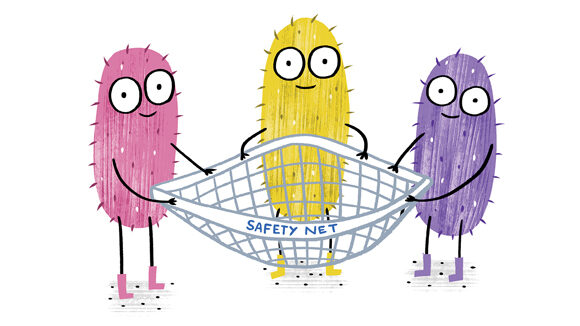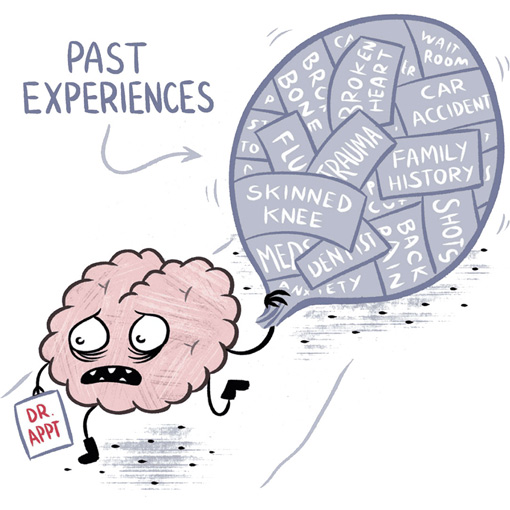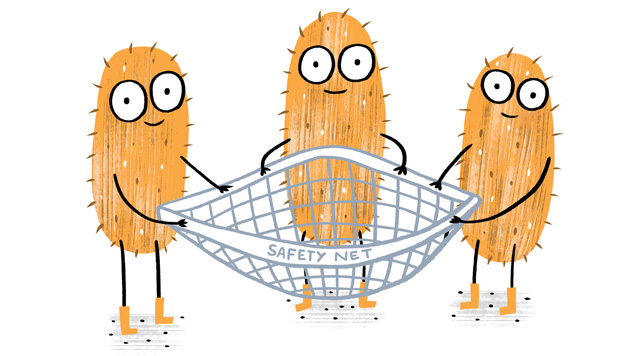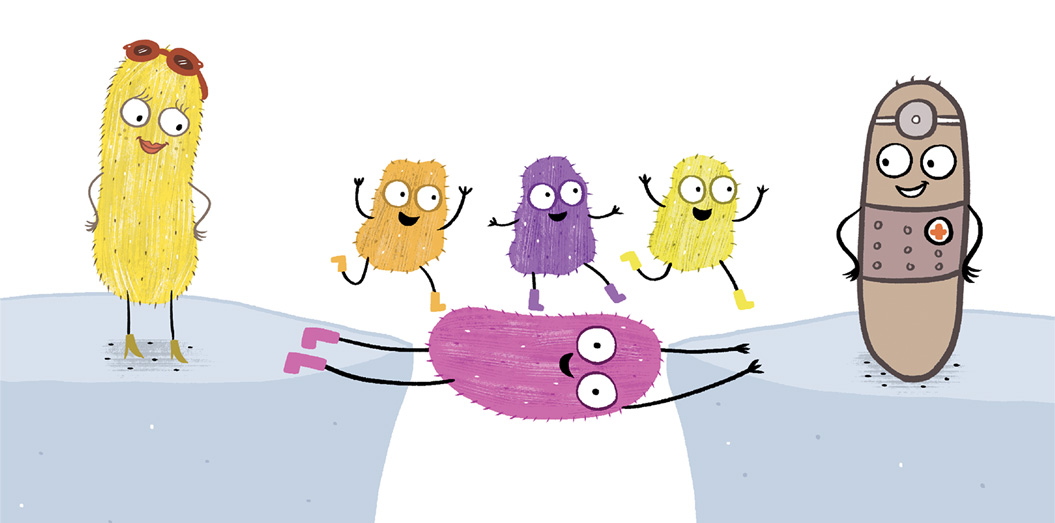No Family Should Face This Alone
What would you give to keep a child from falling through the cracks? Right now, too many families are left behind—navigating pediatric care alone, often without insurance, support, or access to help.

Leslie Lipscomb
Babies & Toddlers (0-2) Kids (3-11) Tweens & Teens (12+) Provider Acute Pain Chronic Pain Procedural Pain English
Share this:
Imagine your child hurting and needing help. You pick up the phone only to be told that it will be six months until they can be seen. And your insurance? It doesn’t even cover it.
Today, parents aren’t just navigating their child’s pain. They’re fighting:
- 6-month waitlists.
- 15-minute appointments.
- A tidal wave of insurance paperwork.
- Providers who want to do more, but often aren’t trained or supported to treat kids’ pain effectively.
Parents know something is wrong. They feel, in their gut that pain and fear is causing lasting harm. But the system makes them question if it’s “big enough” to raise. Or they freeze—intimidated by authority, or simply sit lost in overwhelm.
That’s the gut-wrenching reality for too many families right now. Pediatric waitlists stretch for months. Millions of kids are losing insurance. Costs are so high, parents may be forced to skip care altogether. And the doctors who want to do more? They’re crammed into 15-minute visits, fighting burnout and drowning in paperwork.
Meanwhile, children are stuck—hurting, scared, and learning early that the healthcare system might not show up for them. So, what does this all mean and how does it concern Meg?

When pain isn’t treated well, it doesn’t just hurt now.
We like to think kids bounce back. But pain and fear are sticky. They shape how children see the doctor’s office, their own bodies, getting preventative care, and whether they seek care in the future.

- About 1 in 4 kids develops chronic pain, often carrying it into adulthood along with anxiety and depression.
- Nearly one quarter of adults lived with chronic pain in 2023 and that number is on the rise — up from 20.4% in 2019. The numbers for women, people of color, and those in rural areas? They are even higher.
- 63% of kids and 50% of teens are afraid of needles, straining their trust in providers and their comfort with care.
- About 25% of adults still fear needles—a lasting imprint of pain and anxiety from when they were young, often leading to a mistrust of doctors and avoidance of care.
When a child’s pain is brushed off or left unmanaged, it doesn’t just delay relief today — it risks setting off a chain reaction of healthcare avoidance, distrust, and worsening health that can last for decades, even into adulthood.
And not every family has the same chance to get help.
The truth is: kids who most need support are often the least likely to get it.
- Rural kids wait longer and travel farther—sometimes over 100 miles for specialist care. Nearly 36% of rural families skip needed medical visits because of cost.
- Black, Latino, and Indigenous kids are more likely to lose insurance—and less likely to have their pain taken seriously. Studies show Black children in emergency rooms are significantly less likely to receive pain medication for the same reported pain.
- Families who’ve lost Medicaid or CHIP coverage face even steeper barriers. More than 5 million children are being dropped from these programs, often leaving parents scrambling or forgoing care altogether.
Every child is vulnerable when pain isn’t managed well. But these families—already navigating growing obstacles—bear the heaviest burden.
This is the moment families need us most.
Safety nets are breaking down. Medicaid protections that kept millions of kids insured have ended. More than 5 million children have already lost coverage, many now completely uninsured—leaving parents unprepared and carrying more than they should have to.
At the same time, specialists are overwhelmed, costs are skyrocketing, and providers are stretched too thin to give kids the careful, compassionate care they deserve.
So more families are left to figure it out alone—without the skills, guidance, or support to keep pain and fear from spiraling into something far bigger.
And these barriers aren’t new. We’ve been tackling them for years — but right now, they’re growing wider—and more families are falling through every day.

That’s exactly why we keep our tools forever free.
No paywalls. No logins. No barriers. Because we know that when a child is hurting or a parent is desperate, the last thing they should have to do is find a credit card.
Our donor-funded resources—from step-by-step comfort plans to advocacy guides that show families how to use their voice—are designed to be there the moment a family needs them.They’re free, science-backed tools that turn knowledge into action, so every family can help their child feel better, heal better, and face future care with confidence.
But we can’t keep this lifeline going without your help.
Every one of these tools stays free because people like you choose to stand with us and bridge the gap when systems and structures fall short.
Your support means parents get immediate, judgment-free help—without worrying about whether they can afford it. It means families facing long waits or coverage chaos still have a roadmap. It means providers get trusted tools they can share right away. And it means children learn that their pain matters — and that care can feel safe, supportive, and made for them. Join us in keeping these tools free for every family.

Understanding Pain Guide
A clear, practical overview of how pain works and what families can do to manage it. This guide introduces evidence-based strategies to reduce pain and build confidence.

Pain Champions Tech Tool
A quick, interactive tool just for parents and caregivers. In a few minutes, it teaches proven ways to manage needle pain and anxiety—making healthcare visits less stressful and more supportive.

SuperMeg Tech Tool
Designed for younger kids, this printable tool helps children create a personalized plan to feel more comfortable during needle procedures. When paired with the free SuperMeg digital tool, it helps kids feel prepared, supported, and in control.

Take Control Mobile App for Teens
Created with teens in mind, this guide helps them make their own plan for getting through needle procedures with more confidence and less stress. It works hand-in-hand with the Take Control mobile app to give teens the tools they need to speak up and take charge of their care.

Chronic Pain Family Guides
A series of research-backed handouts that support kids living with ongoing pain. Each guide offers practical strategies for building healthy routines, improving sleep, managing school, and getting back to being a kid.
Here’s what your support makes possible right now:
Every dollar makes a difference.
- $250 — Train Community Health Partners Equips local health workers with best practices in kids’ pain and medical anxiety, so families in underserved areas get better support.
- $500 — Create Family Tools Builds new interactive resources—like videos and webinars—that teach kids and parents how to face medical fears with skill and confidence.
- $1,000 — Raise Global Awareness Drives campaigns that change how the world sees children’s pain, using stories and outreach that reach diverse communities.
- $2,500 — Launch Family Support Starts new initiatives that give parents practical, research-backed guidance to help kids handle pain and fear.
- $5,000 — Advance Policy & Advocacy Powers advocacy that pushes healthcare systems to treat kids’ pain as a real priority—reshaping care for countless families.
- $10,000 — Build Child-Centered Programs Develops and tests comprehensive programs that give kids and their families hands-on tools, clear strategies, and strong support networks.

Act now so no child is left behind.
Every day we wait, more kids face pain and fear without the support they need. Your gift means they don’t have to — and it can change a child’s story from one of fear and confusion to one of confidence, comfort, and trust.
What would you give to stop a child from believing their pain doesn’t matter?
Because every child deserves care that shows up for them — each and every time.
References
- 1. Children’s Hospital Association. (2023). Pediatric Workforce Shortages Persist. View PDF
2. Association of Health Care Journalists. (2024). Millions of children lose Medicaid coverage as state enrollment issues persist. Read article
3. Strengthen Healthcare Coalition. (2023). Nearly Half of Americans Received Medical Bills That Should Have Been Covered by Insurance. Read more
4. UCSF News. (2023). Pain Expert Calls on Clinicians to Stop Needle Pain for Kids. Read article
5. Stanford School of Engineering. (2024). The Future of Pediatric Pain. Read article
6. National Institutes of Health / PMC. (2016). Racial Disparities in Pain Management of Children with Appendicitis. View study
7. KFF Health News. (2023). High Cost Drives a Third of Rural Americans to Skip Medical Care. Read article
8. BMC Anesthesiology. (2025). Barriers and Facilitators of Pain Management in Children: A Scoping Review. View study
9. Children’s Hospital Association. (2024). A Better Tomorrow for Children’s Mental Health Depends on Today’s Actions. Read more
10. The Washington Post. (2024). Nearly a quarter of U.S. adults suffered chronic pain last year. Read article

About the Author
Leslie Lipscomb is the Chief Operating Officer of the Meg Foundation—and a former board member who stepped into day-to-day leadership to drive the mission forward. A healthcare consultant, strategist, storyteller, and parent of a childhood cancer survivor, she brings more than 15 years of experience transforming healthcare systems, supporting providers, and empowering families. Her work blends lived experience with systems thinking, driven by a deep belief in bridging the gaps between families, providers, and the systems meant to support them.